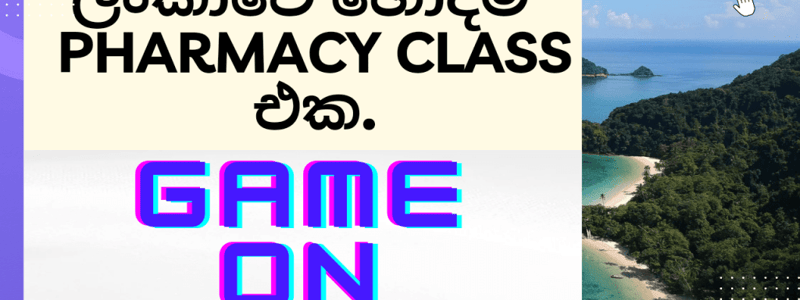Podcast
Questions and Answers
Pharmacodynamics is the study of how the body affects drugs.
Pharmacodynamics is the study of how the body affects drugs.
False (B)
Pharmacokinetics is the study of how drugs affect the body.
Pharmacokinetics is the study of how drugs affect the body.
False (B)
The therapeutic window is the range of drug doses that are effective and safe.
The therapeutic window is the range of drug doses that are effective and safe.
True (A)
The therapeutic index measures the safety of a drug by comparing its effective dose to its lethal dose.
The therapeutic index measures the safety of a drug by comparing its effective dose to its lethal dose.
Onset of action refers to the time it takes for a drug to start producing its effects.
Onset of action refers to the time it takes for a drug to start producing its effects.
Termination of action refers to the process by which the body eliminates a drug.
Termination of action refers to the process by which the body eliminates a drug.
Duration of action is the length of time a drug remains in the body at therapeutic levels.
Duration of action is the length of time a drug remains in the body at therapeutic levels.
: Absorption is the process by which a drug enters the bloodstream from its site of administration.
: Absorption is the process by which a drug enters the bloodstream from its site of administration.
Distribution refers to how a drug is spread throughout the body's tissues.
Distribution refers to how a drug is spread throughout the body's tissues.
Metabolism involves the transformation of drugs in the body, often in the liver.
Metabolism involves the transformation of drugs in the body, often in the liver.
Elimination is the removal of drugs from the body, primarily through urine and feces.
Elimination is the removal of drugs from the body, primarily through urine and feces.
The therapeutic window can vary among individuals due to genetic factors.
The therapeutic window can vary among individuals due to genetic factors.
A narrow therapeutic index indicates a small margin of safety for a drug.
A narrow therapeutic index indicates a small margin of safety for a drug.
Rapid onset of action is typically seen with intravenous drug administration.
Rapid onset of action is typically seen with intravenous drug administration.
The liver plays a key role in drug absorption.
The liver plays a key role in drug absorption.
Some drugs can be absorbed through the skin, bypassing the digestive system.
Some drugs can be absorbed through the skin, bypassing the digestive system.
Distribution is affected by factors such as blood flow and tissue binding.
Distribution is affected by factors such as blood flow and tissue binding.
Drug interactions can alter the metabolism of certain medications.
Drug interactions can alter the metabolism of certain medications.
Renal excretion is an example of drug elimination through the kidneys.
Renal excretion is an example of drug elimination through the kidneys.
The half-life of a drug is the time it takes for half of the drug to be eliminated from the body.
The half-life of a drug is the time it takes for half of the drug to be eliminated from the body.
Tolerance to a drug can develop over time, requiring higher doses for the same effect.
Tolerance to a drug can develop over time, requiring higher doses for the same effect.
Drug bioavailability is influenced by factors such as food intake.
Drug bioavailability is influenced by factors such as food intake.
Some drugs can cross the blood-brain barrier, affecting the central nervous system.
Some drugs can cross the blood-brain barrier, affecting the central nervous system.
Cytochrome P450 enzymes are involved in drug metabolism.
Cytochrome P450 enzymes are involved in drug metabolism.
Renal impairment can lead to altered drug elimination.
Renal impairment can lead to altered drug elimination.
Topical medications are primarily absorbed through the gastrointestinal tract.
Topical medications are primarily absorbed through the gastrointestinal tract.
The therapeutic window of a drug is always the same for every patient.
The therapeutic window of a drug is always the same for every patient.
Drug-drug interactions can result in increased or decreased therapeutic effects.
Drug-drug interactions can result in increased or decreased therapeutic effects.
Sublingual administration allows for rapid absorption through the oral mucosa.
Sublingual administration allows for rapid absorption through the oral mucosa.
The peak plasma concentration of a drug occurs when absorption equals elimination.
The peak plasma concentration of a drug occurs when absorption equals elimination.
First-pass metabolism occurs when a drug is metabolized before entering the systemic circulation.
First-pass metabolism occurs when a drug is metabolized before entering the systemic circulation.
Intramuscular injections have a slower onset of action compared to intravenous injections.
Intramuscular injections have a slower onset of action compared to intravenous injections.
Biotransformation of drugs can lead to the formation of active or inactive metabolites.
Biotransformation of drugs can lead to the formation of active or inactive metabolites.
Some drugs require specific pH conditions in the stomach for optimal absorption.
Some drugs require specific pH conditions in the stomach for optimal absorption.
The therapeutic index is a static measurement that does not change with dose.
The therapeutic index is a static measurement that does not change with dose.
Drug excretion can occur through the lungs via exhaled air.
Drug excretion can occur through the lungs via exhaled air.
Drug absorption is typically slower when taken with a full meal.
Drug absorption is typically slower when taken with a full meal.
The volume of distribution is a measure of how extensively a drug is distributed in the body.
The volume of distribution is a measure of how extensively a drug is distributed in the body.
Drug elimination is the same for all individuals, regardless of their health status.
Drug elimination is the same for all individuals, regardless of their health status.
Some drugs can be eliminated in their unchanged form through bile.
Some drugs can be eliminated in their unchanged form through bile.
Intranasal drug administration can lead to rapid drug absorption through the nasal mucosa.
Intranasal drug administration can lead to rapid drug absorption through the nasal mucosa.
Drug metabolism is primarily a function of the kidneys.
Drug metabolism is primarily a function of the kidneys.
The therapeutic window is wider for drugs with a high therapeutic index.
The therapeutic window is wider for drugs with a high therapeutic index.
Drug accumulation can occur with repeated dosing if elimination is slower than absorption.
Drug accumulation can occur with repeated dosing if elimination is slower than absorption.
In pharmacokinetics, the "Cmax" represents the maximum drug concentration in the bloodstream.
In pharmacokinetics, the "Cmax" represents the maximum drug concentration in the bloodstream.
The bioavailability of a drug is 100% when administered intravenously.
The bioavailability of a drug is 100% when administered intravenously.
Drug interactions can be both pharmacokinetic and pharmacodynamic in nature.
Drug interactions can be both pharmacokinetic and pharmacodynamic in nature.
Lipophilic drugs tend to have longer durations of action.
Lipophilic drugs tend to have longer durations of action.
Drug half-life is the same for all drugs, regardless of their properties.
Drug half-life is the same for all drugs, regardless of their properties.
Drug transporters in the body can influence drug distribution and elimination.
Drug transporters in the body can influence drug distribution and elimination.
Flashcards are hidden until you start studying




